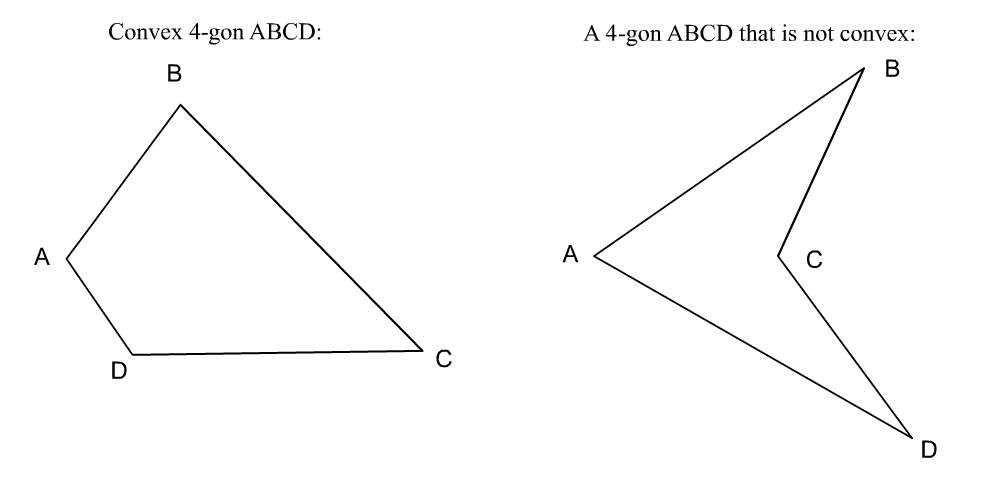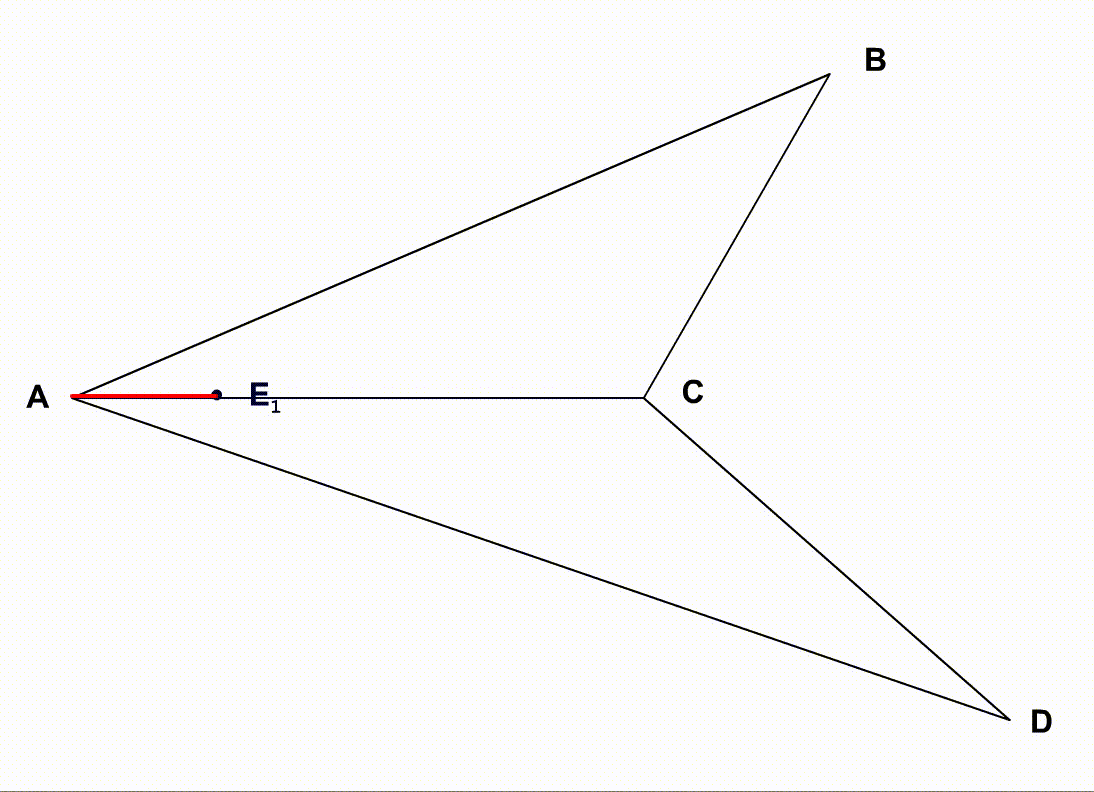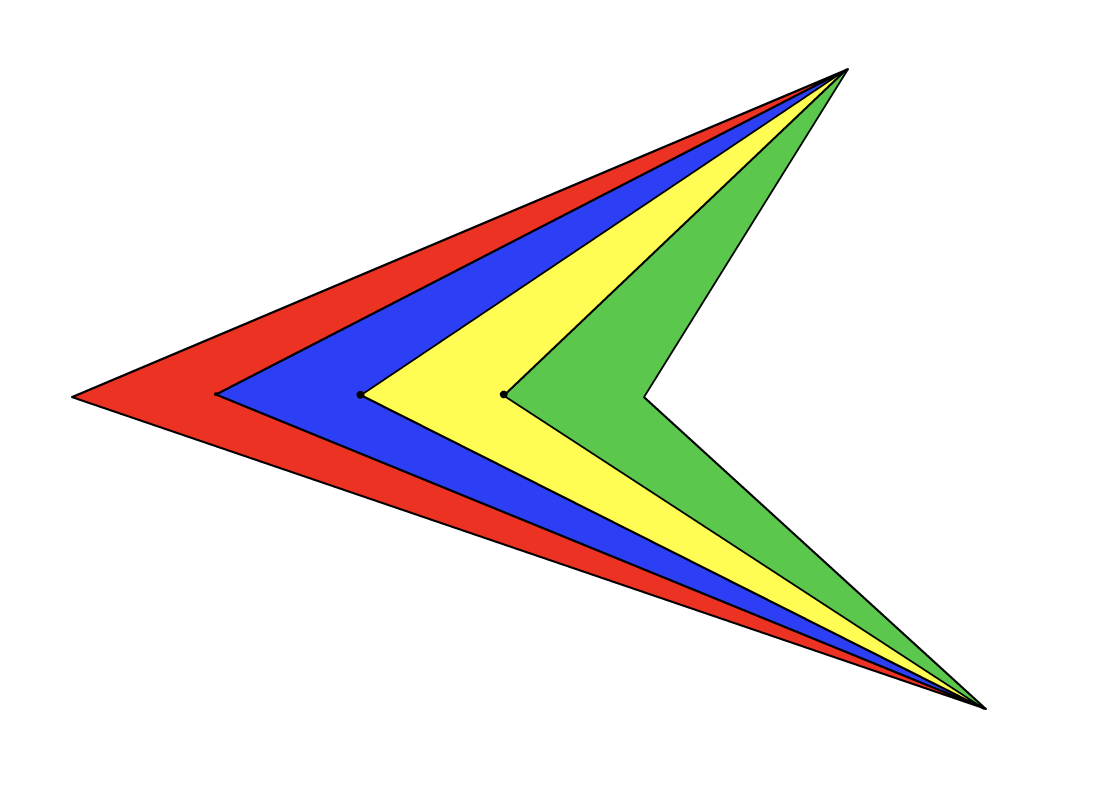 |
Quadrilaterals |  |
 |
Quadrilaterals |  |
Problem.
Divide a four-sided polygon (quadrilateral or 4-gon) into k parts of equal areas
(k may be 2, 3, ...).
Remark. The 4-gon does not have to be convex.

Task 1.
Students work in groups (three or four per group). Each group gets an irregular
4-gon drawn on a sheet of paper, and an envelope. They are told how many parts
(k = 2, 3, 4, or 5) they should divide their 4-gon into. After they finish their
task, they cut out their 4-gon, cut it into k pieces, and put them into the
envelope.
Remark. Different groups may get different 4-gons and different values for k.
After all groups finish, they present their solution to the rest of the class.
Task 2.
The teacher discusses with the class the solution that is provided below.
Each student gets an irregular 4-gon drawn on a sheet of paper and an envelope,
and is told how many parts the 4-gon is to be divided into. Each student finishes
the task using the method described by the teacher.
General method.
The red bar sliding from left to right is the constant length base of all the triangles. The height of all the top triangles remains constant and the height of all the bottom triangles remains constant.

The four quadrilaterals
A B E1 D , E1 B E2 D , E2 B E3
D , and E3 B C D
all have the same area.
This is so because each 4-gon consists of two triangles, the upper ones, A B E1 , E1 B E2 , E2 B E3 , and E3 B C, and the lower ones, A E1 D , E1 E2 D , E2 E3 D , and E3 C D, where all upper ones have the same height and equal bases, and all the lower ones also have the same height and equal bases. See picture:

Here is a finished product!
